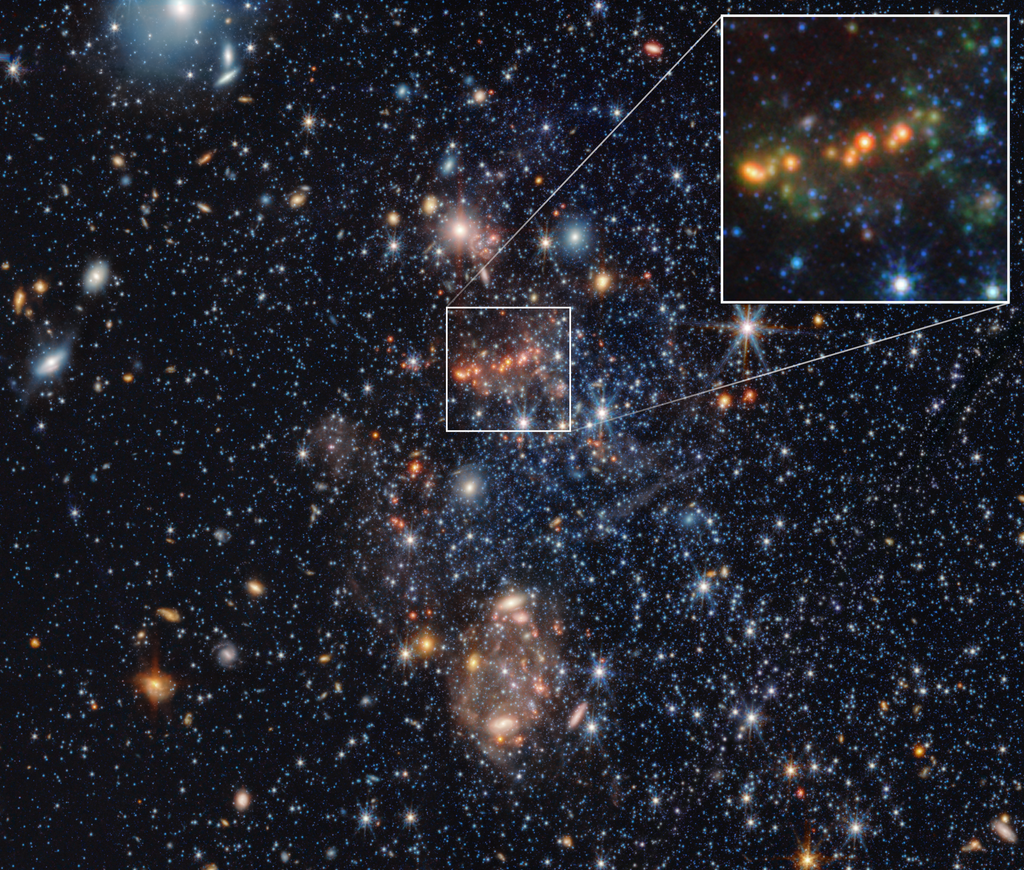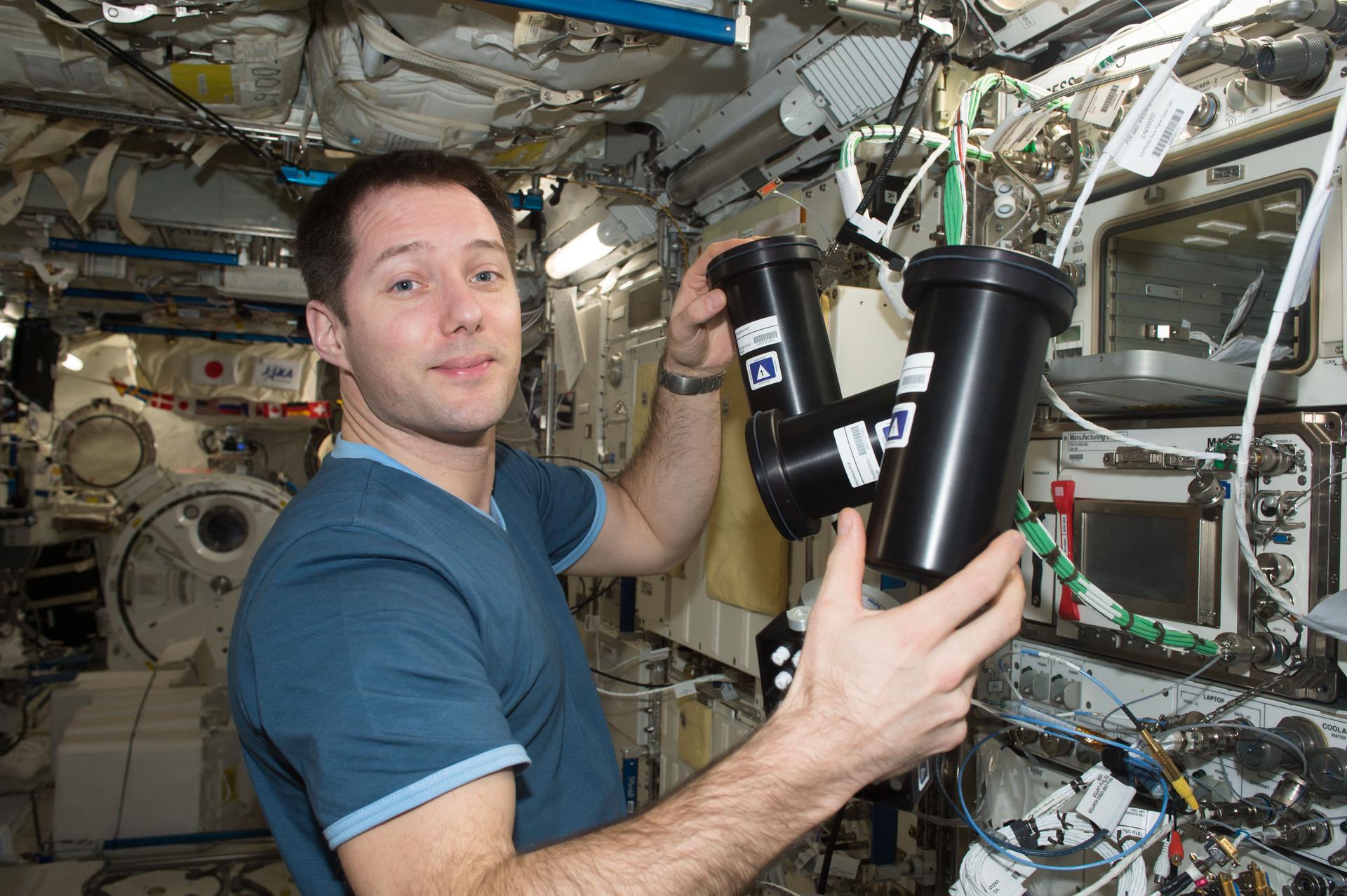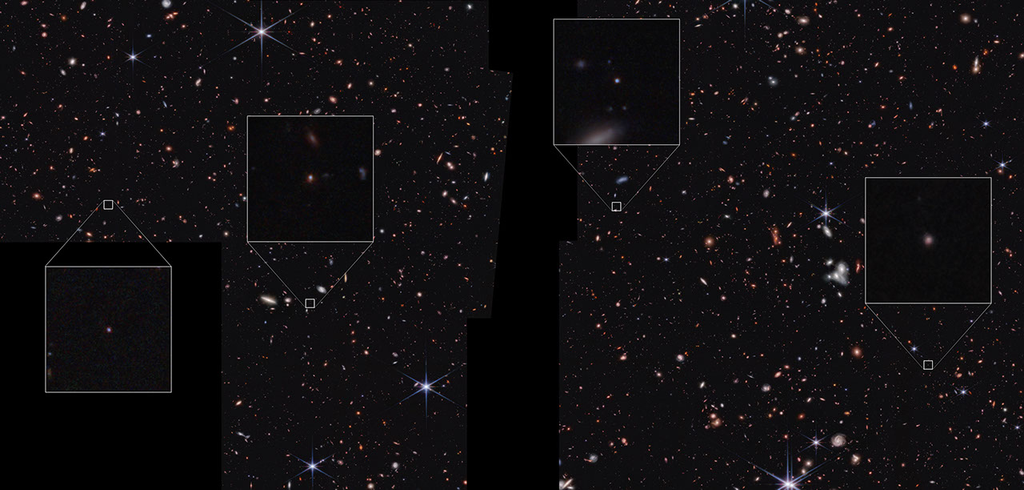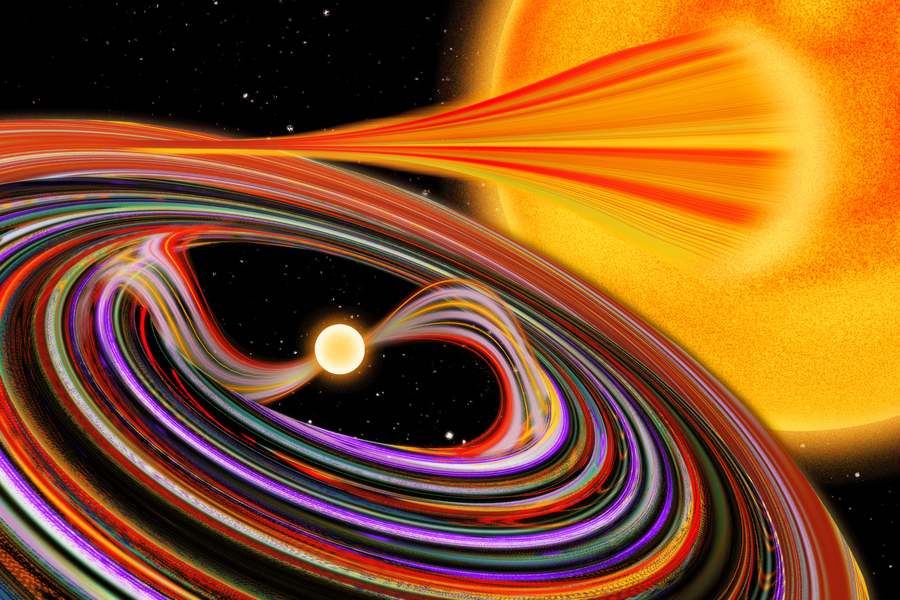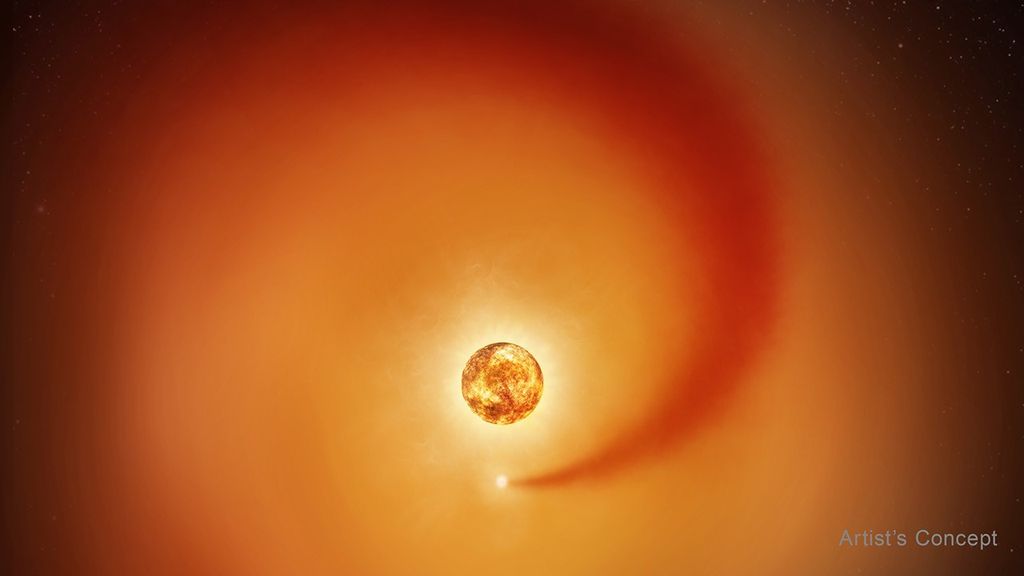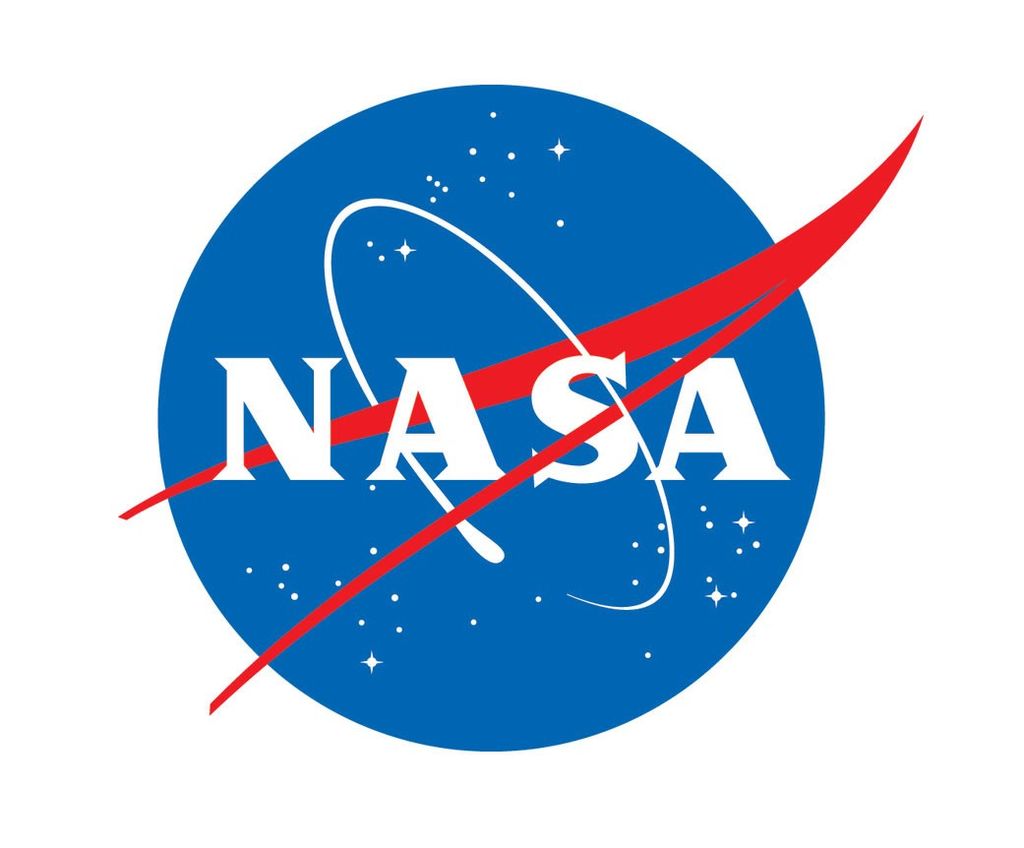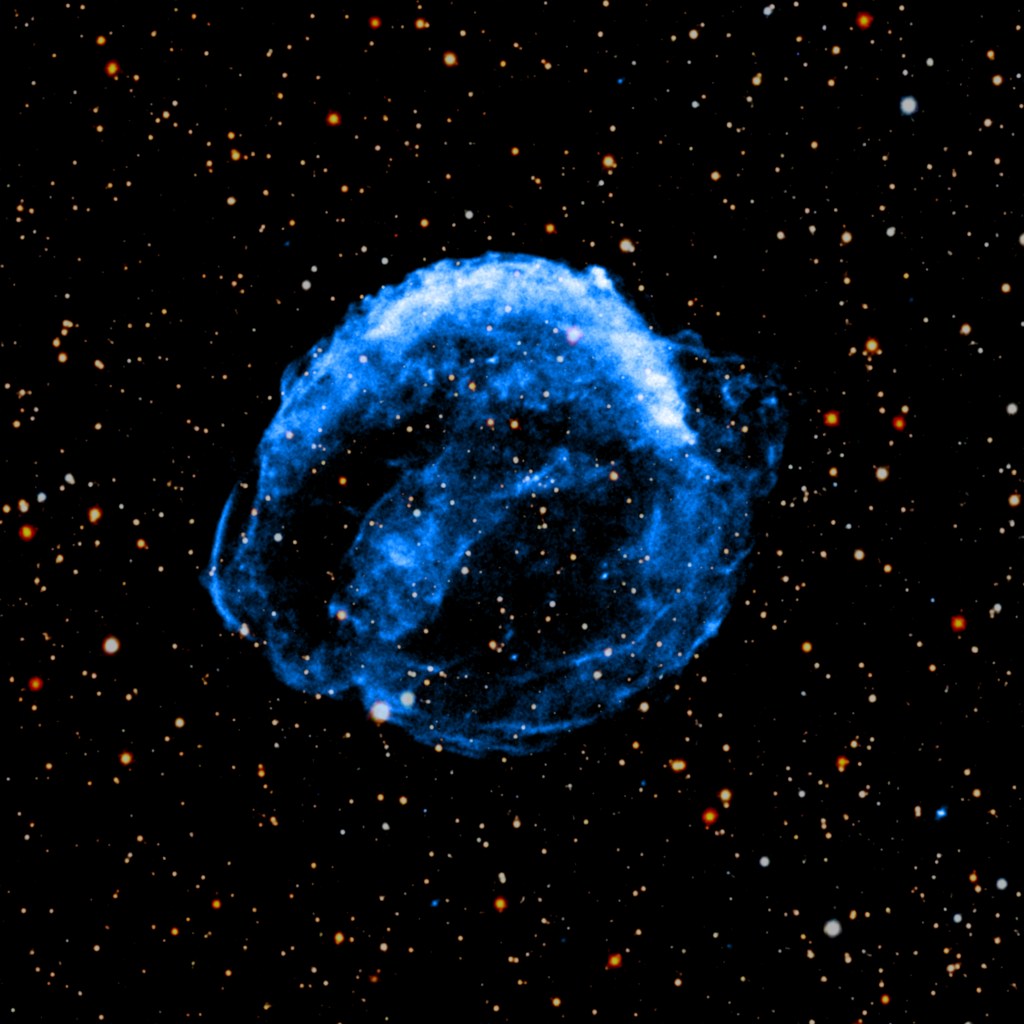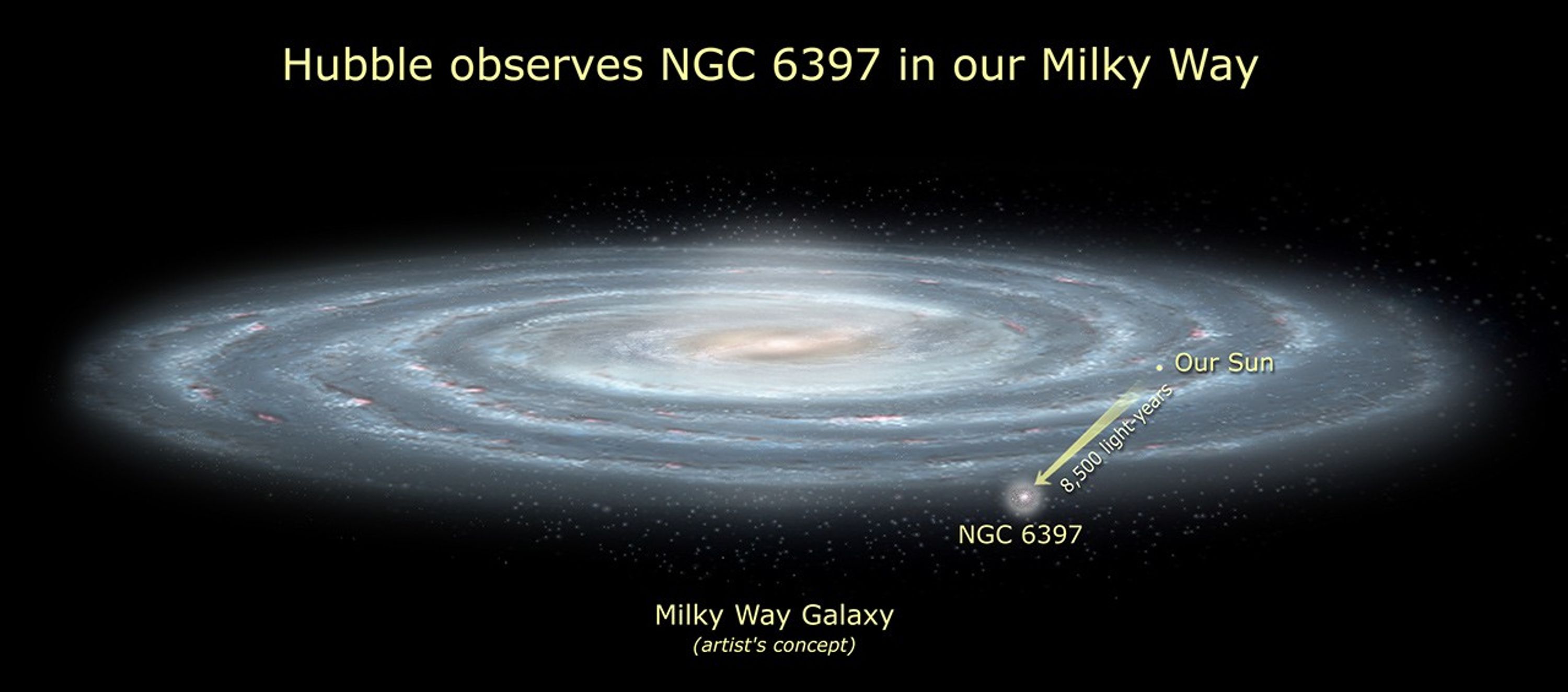1 min read
Faintest Stars in Globular Cluster NGC 6397
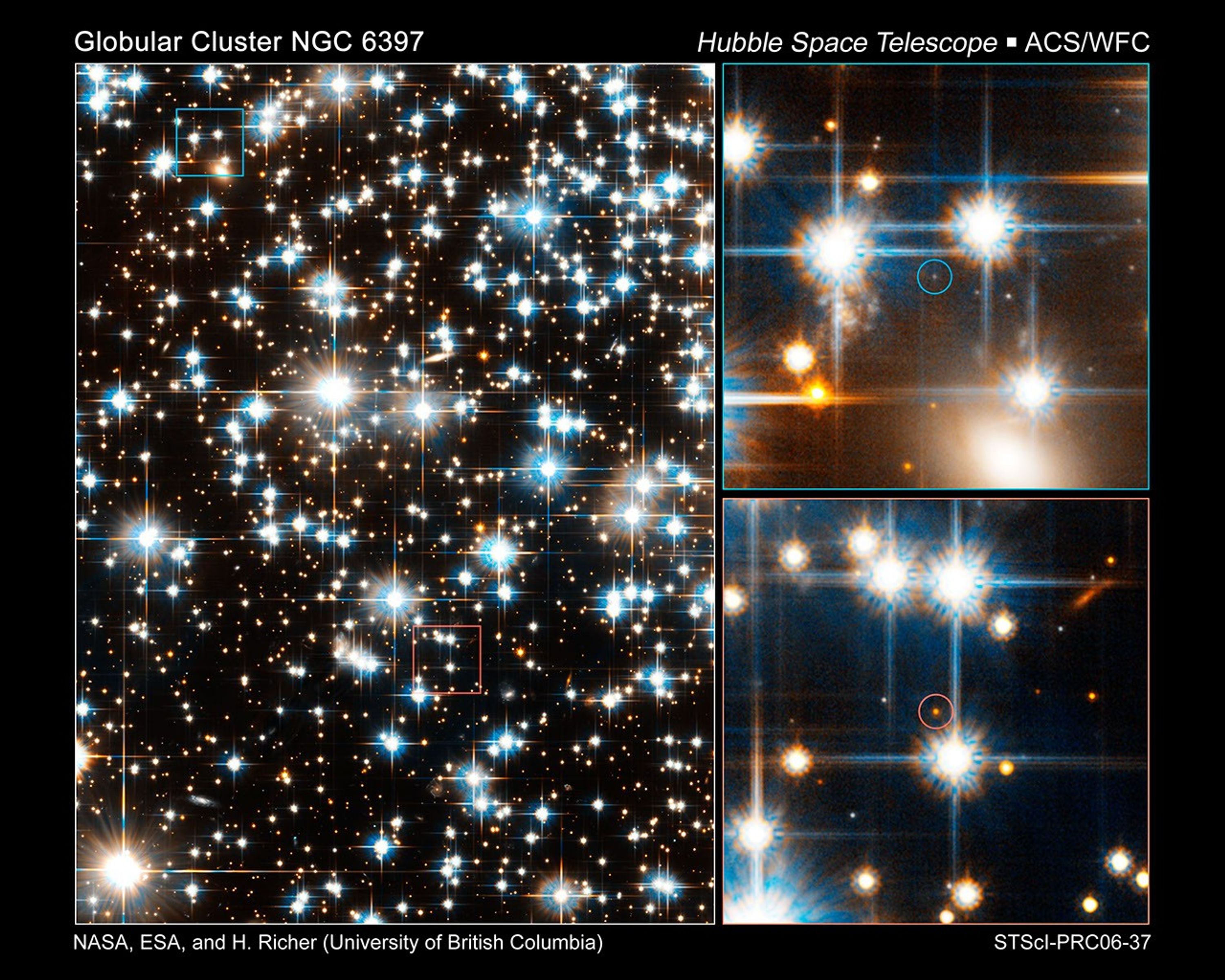
Looking like glittering jewels, the stars in this Hubble Space Telescope image at left are part of the ancient globular star cluster NGC 6397. Scattered among these brilliant stars are extremely faint stars. Hubble's Advanced Camera for Surveys has taken a census of the cluster stars, uncovering the faintest stars ever seen in a globular cluster. Globular clusters are spherical concentrations of hundreds of thousands of old stars.
The Advanced Camera found the faintest red dwarf stars (26th magnitude), which are cooler and much lower in mass than our Sun, and the dimmest white dwarfs (28th magnitude), the burned-out relics of normal stars. The light from the dimmest white dwarfs is equal to the light produced by a birthday candle on the Moon as seen from Earth.
The image at lower right shows the faintest red dwarf star (the red dot within the red circle) spied by Hubble.
The image at upper right pinpoints one of the dim white dwarfs (the blue dot within the blue circle) seen by Hubble. The white dwarf has been cooling for billions of years. It is so cool that instead of looking red, it has undergone a chemical change in its atmosphere that makes it appear blue.
The images were taken with visual and red filters. NGC 6397, one of the closest globular clusters to Earth, is 8,500 light-years away in the southern constellation Ara.
The data for these images were obtained in March and April 2005.
About the Object
- R.A. PositionR.A. PositionRight ascension – analogous to longitude – is one component of an object's position.17h 40m 41.35s
- Dec. PositionDec. PositionDeclination – analogous to latitude – is one component of an object's position.-53° 40' 25.29"
- ConstellationConstellationOne of 88 recognized regions of the celestial sphere in which the object appears.Ara
- DistanceDistanceThe physical distance from Earth to the astronomical object. Distances within our solar system are usually measured in Astronomical Units (AU). Distances between stars are usually measured in light-years. Interstellar distances can also be measured in parsecs.8,500 light-years (2.6 kiloparsecs)
About the Data
- Data DescriptionData DescriptionProposal: A description of the observations, their scientific justification, and the links to the data available in the science archive.
Science Team: The astronomers who planned the observations and analyzed the data. "PI" refers to the Principal Investigator.This image was created from HST data from proposal 10424: H. Richer (University of British Columbia), P. Guhathakurta (University of California, Santa Cruz), R.M. Rich (University of California, Los Angeles), J. Anderson (Rice University), G. Fahlman (National Research Council/Herzberg Institute of Astrophysics, Canada), B. Gibson (Swineburne University of Technology), B. Hansen (University of California, Los Angeles), J. Hurley (Monash University, Australia), J. Kalirai (University of California, Santa Cruz), I. King (University of Washington, Seattle), M. Shara (American Museum of Natural History), and P. Stetson (National Research Council/Herzberg Institute of Astrophysics, Canada). The science team comprises: H. Richer (University of British Columbia), J. Anderson (Rice University), J. Brewer and S.Davis (University of British Columbia), G. Fahlman (National Research Council/Herzberg Institute of Astrophysics, Canada), B. Hansen (University of California, Los Angeles), J. Hurley (Monash University, Australia), J. Kalirai (University of California, Santa Cruz), I. King (University of Washington, Seattle), D. Reitzel (University of California, Los Angeles), R.M. Rich (University of California, Los Angeles), M. Shara (American Museum of Natural History), and P. Stetson (National Research Council/Herzberg Institute of Astrophysics, Canada). - InstrumentInstrumentThe science instrument used to produce the data.HST>ACS/WFC
- Exposure DatesExposure DatesThe date(s) that the telescope made its observations and the total exposure time.March and April, 2005, Exposure Time: 4.7 days
- FiltersFiltersThe camera filters that were used in the science observations.F606W (V) and F814W (I)
- Object NameObject NameA name or catalog number that astronomers use to identify an astronomical object.NGC 6397
- Object DescriptionObject DescriptionThe type of astronomical object.Globular Cluster
- Release DateAugust 17, 2006
- Science ReleaseHubble Sees Faintest Stars in a Globular Cluster
- Credit

This image is a composite of many separate exposures made by the ACS instrument on the Hubble Space Telescope using several different filters. Three filters sample broad wavelength ranges, one isolates the light of hydrogen. The color results from assigning different hues (colors) to each monochromatic image. In this case, the assigned colors are: Cyan: F606W (V) Orange: F814W (I)

Related Images & Videos

Tale of Two Stellar Populations in Globular Cluster NGC 6397
This graph schematically plots two populations of stars Hubble has seen in a neighboring star cluster. The graph, a simplified version of the original data, plots stellar brightness (vertical axis) against stellar color-temperature. The normal main sequence stars in the cluster...

Location of ACS detail in NGC 6397
Globular Cluster NGC 6397 taken in red light by the UK Schmidt Telescope of the Anglo-Australian Telescope. The green rectangle to the left and below the bright central of the cluster shows the location of the detailed image made by Hubble Space Telescope's Advanced Camera for...
Share
Details
Claire Andreoli
NASA’s Goddard Space Flight Center
Greenbelt, Maryland
claire.andreoli@nasa.gov

